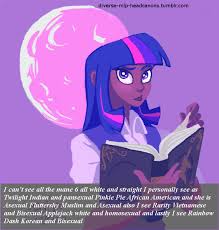Good character development is an important - probably the most important - aspect of storytelling, one which influences the narrative arc as well as the emotional investment of the audience. Writers are always hungry to find what trade secrets exist out there which will shed light how to make their characters be more complex and have more depth. The headcanon generator is one such innovative tech that can serve as a treasure trove to initiate novel concepts and delve into various uncharted territories within character development. In this document were going to go into how to efficiently use this tool to boost your storytelling skills.
Step 1: Select the Right Tool
The most important thing to do first is choose the right headcanon generator. A good generator is able to provide you with options that work within the confines of your genre or the unique factors of your characters. It has to strike a balance of specificity and randomness, letting you channel ideas without being prescriptive and, crucially, forcing prompts that you may never have otherwise thought of - to stoke your creativity. Headcanon Generator lets you customize things according to your choice of mind, and the type of headcanon you want.
Stage 2: Ideation
After you have landed on your tool, the next step is to come up with ideas. The generator can help you create scenarios, traits, or backstories for your characters. Literal examples may be prompts which propose that a character secretly has a hobby, or a history which now influences who they are. So such prompts only serve as a launch pad for a more in-depth dive into understanding his psychology, his inclinations and his motivations.

Step 3: Work the Prompts into Your Character Profile
Compile these different prompts and start weaving these ideas into your character profiles. Through such, you are essentially vetting each prompt and deciding if and how it would organically coexist within the vast narrative of your pre-established character. So if a prompt says your character is afraid of water, now you get to tie that fear to something in their past (maybe a childhood incident, maybe a symbolic moment in their life) and decide how it affects their story behavior.
4th Step: Development and Testing of Operations
Follow these prompts to consider relations within-chapel success and generate ideas to write. This allows you to give another level of depth to your narrative, diving into their headcanons and how they influence their relationships out of game. For instance, If someone has a headcanon that exposes one character as being loyal whole time or being a traitor, it creates beautiful dynamics and story sparks such as those can be a game-changer for maybe your plot.
Step Five: Render the Story and Revise
As you develop, streamline, and enrich the more finely detailed narrative within your developing story-line. Every kind of headcanon-inspired character trait or backstory should be intended to help develop the character and the story. This step is often executed with writing scenes or dialogues that either show this new aspect of them or have it affect the plot in a way that makes it appear as though it was never NOT part of the character in the first place.
Advantages Of Utilizing a Headcanon Generator
A headcanon generator can Boost their creativity: Writers found out that using a headcanon generator might grow its creativity because of its ability to propose some prompts that was unthinkable for them. How can it break you free from Writer's Block?
Greater Character Layers: Cooking the characters in with other traits we are not used to seeing gives them depth and makes them feel like real people. With this, characters become only more human, which the audience even easier can connect and be drawn to.
Fast Story Development: Writing prompt generator can accelerate the development phase of writing as they provide you with possible writing ideas, that might be non-easy to come up with.
A well-made headcanon generator, when used during character development, serves to ensure that your characters are deep and fleshed out while also contributing to better constructed narratives. Creating stories that touch and affect your audience means constantly pushing the boundaries of your own creativity and adding new planes of your characters
